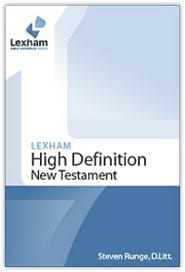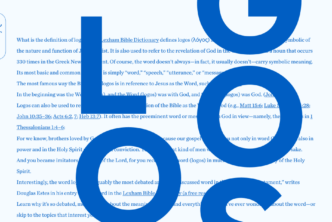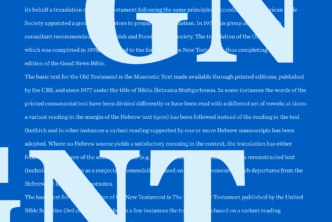Today’s guest post is from Dr. Steve Runge, a scholar-in-residence at Logos Bible Software, whose work focuses on the discourse grammar of Hebrew and Greek.
One of the many valuable life lessons I learned growing up came from Sesame Street’s esteemed blue monster, Grover. One of my favorite bits he did (besides Super Grover) was teaching about ‘near’ and ‘far’. Do you remember that? He would run up to the camera (I know, his puppeteer moved him, but indulge me here) and say ‘Near’. Then he would run way into the background and say ‘Far’, repeating it a few times to drive the point home. Believe it or not, this information can really help your Bible study, especially in John’s writings. There are some new Pre-Pubs, the Lexham High Definition New Testament and the Lexham Discourse Greek New Testament, that provide access to some great new insights that can really impact how you read and study Scripture. Today I want to introduce you to another device: the near/far distinction. Just like Grover taught about how things can be near and far in terms of distance, we also use the near and far distinction to signal what is thematically central (‘near’) to the story and what is non-central (‘far’).
If I was clothes shopping (argghh!) and my wife held up two items for me to help her chose between, she might ask, “Do you like this one or that one?” Chances are that ‘this one’ is the one that she is more interested in. I might respond “I like this one better than that one” even though both are the same distance away. This is an example of creating a near/far distinction in order to communicate that one thing is more important than another. We tend to use ‘this/these’ for things that are of central importance, and ‘that/those’ for things that are of only passing importance, not central to the story.
John creates near/far distinctions all the time in his writings to distinguish important things from those that are less important. Unfortunately, many of them are smoothed over in translation to English. He uses this distinction in order to clarify what he is primarily interested in, especially when there are other things competing for our attention that are not of central importance. Let’s take a look at some examples, and see how Grover has equipped us for better Bible study. In John 5:19, there are a whole gaggle of devices that are used to draw attention to Jesus’ reply to the Pharisees that are questioning him. Here is what it looks like in an alpha version of the HDNT:

What we are interested in today are the ‘near distinction’ symbols (


Do you see how the near/far distinction works? There are a bunch of topics here that are competing for our attention: the Father, the Son, and what the Son sees the Father doing. So which one is of central importance? If you only had the ESV text, it would be difficult to tell, you are left to make the decision on your own. In the HDNT, the near and the far distinctions are clearly marked, even though the ‘that’ has been translated as ‘the Father’. If you had the LDGNT (which includes everything from the HDNT as well), you would be able to look at both to see what is going on, just like we did above.
The same kind of near/far contrast is found again in John 5:38; take a look.

If we were to do an RLV (really literal version), it would read “ . . . for you do not believe in this one whom that one sent”. Once again, ‘that one’ refers to the Father, whereas ‘this one’ refers to Jesus. In this instance, Jesus himself is of central importance, since he is the object of belief (or unbelief in this case). The translation has obscured the near/far distinction that clearly exists in Greek, one that the writer purposefully used to make sure that his main point would be our main point. The HDNT brings back this detail that is lost in translation, drawing your attention to significant things that you might otherwise miss. The LDGNT allows you to see the underlying Greek, plus includes the English HDNT in a bundle.
Did you wonder what all of those other symbols were in John 5:19? There are other blog posts that explain them, if you are interested in reading more. Here they are:



If you haven’t yet placed your order, don’t miss out while it’s still available at the discounted Pre-Pub pricing.





